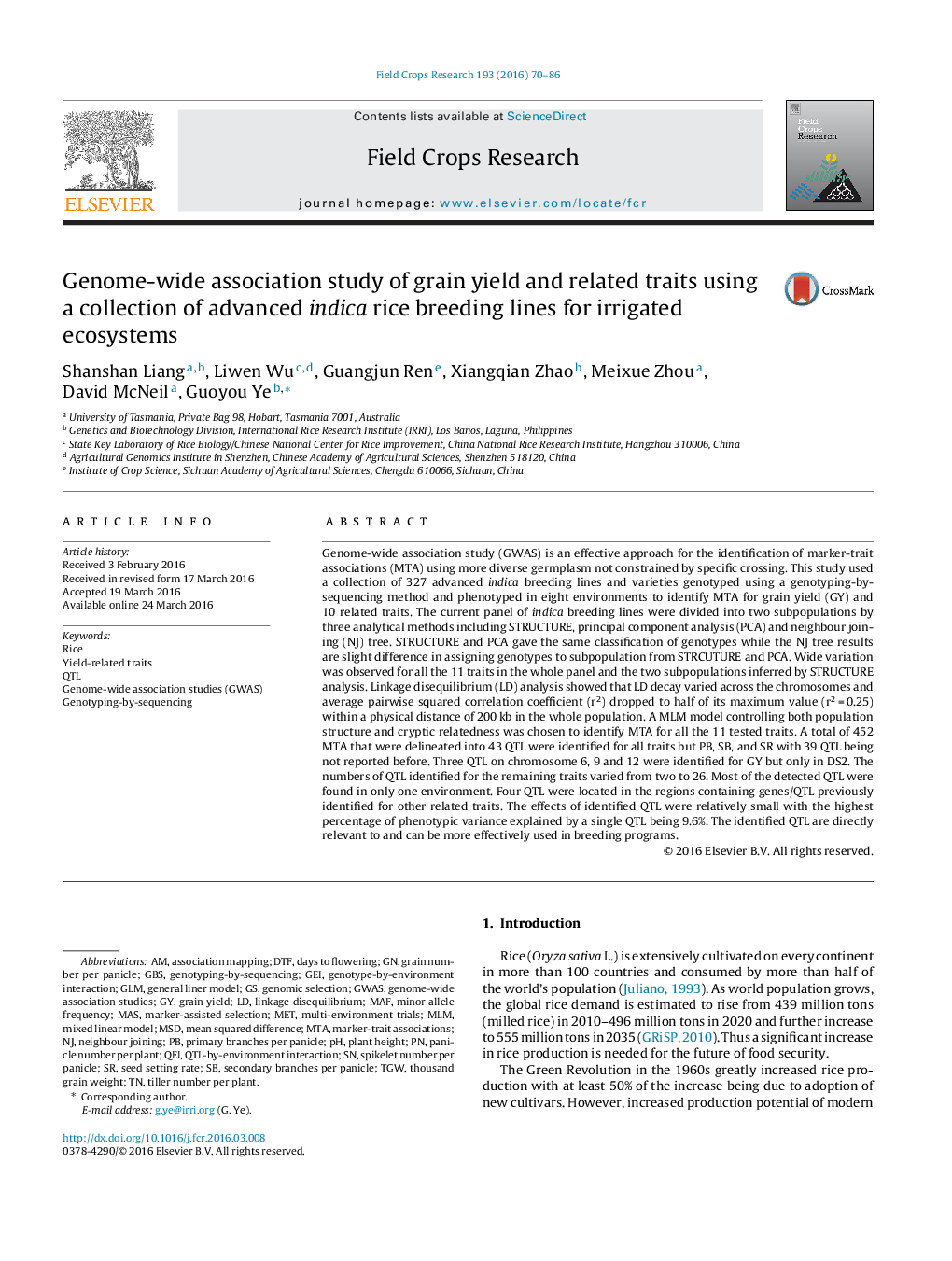| کد مقاله | کد نشریه | سال انتشار | مقاله انگلیسی | نسخه تمام متن |
|---|---|---|---|---|
| 6374448 | 1624670 | 2016 | 17 صفحه PDF | دانلود رایگان |

- A GWAS was conducted using a panel of indica elite breeding lines tested for grain yield and 10 related traits in eight environments and genotyped by GBS.
- Population structure and unequal familial relationship were present and caused false positives in GWAS. Familial relationship was more important than population structure.
- A total of 43 QTL were identified for all traits but PB, SB, and SR with 39 QTL being not reported before. A few QTL affected multiple traits.
- Most of the identified QTL were detected only in one testing environment, implying significant gene-by-environment interaction.
Genome-wide association study (GWAS) is an effective approach for the identification of marker-trait associations (MTA) using more diverse germplasm not constrained by specific crossing. This study used a collection of 327 advanced indica breeding lines and varieties genotyped using a genotyping-by-sequencing method and phenotyped in eight environments to identify MTA for grain yield (GY) and 10 related traits. The current panel of indica breeding lines were divided into two subpopulations by three analytical methods including STRUCTURE, principal component analysis (PCA) and neighbour joining (NJ) tree. STRUCTURE and PCA gave the same classification of genotypes while the NJ tree results are slight difference in assigning genotypes to subpopulation from STRCUTURE and PCA. Wide variation was observed for all the 11 traits in the whole panel and the two subpopulations inferred by STRUCTURE analysis. Linkage disequilibrium (LD) analysis showed that LD decay varied across the chromosomes and average pairwise squared correlation coefficient (r2) dropped to half of its maximum value (r2Â =Â 0.25) within a physical distance of 200Â kb in the whole population. A MLM model controlling both population structure and cryptic relatedness was chosen to identify MTA for all the 11 tested traits. A total of 452 MTA that were delineated into 43 QTL were identified for all traits but PB, SB, and SR with 39 QTL being not reported before. Three QTL on chromosome 6, 9 and 12 were identified for GY but only in DS2. The numbers of QTL identified for the remaining traits varied from two to 26. Most of the detected QTL were found in only one environment. Four QTL were located in the regions containing genes/QTL previously identified for other related traits. The effects of identified QTL were relatively small with the highest percentage of phenotypic variance explained by a single QTL being 9.6%. The identified QTL are directly relevant to and can be more effectively used in breeding programs.
Journal: Field Crops Research - Volume 193, July 2016, Pages 70-86